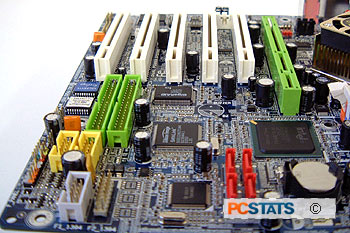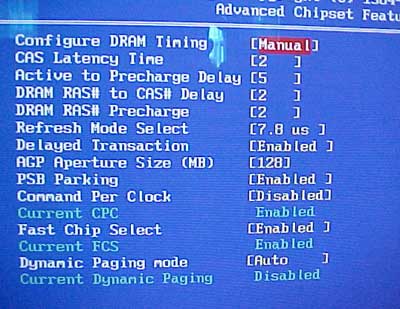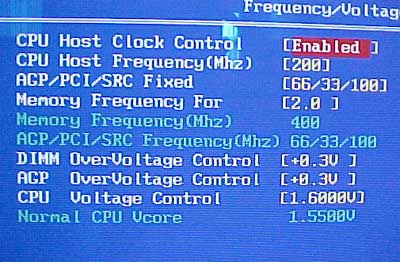Despite having a whole load of
integrated features we were happy to find the 8KNXP still has five PCI slots
for expansion.

I never really appreciated dual BIOS's
until I accidentally killed a motherboard with a bad BIOS flash. After two weeks of waiting for the
board to be returned, I came to appreciate having a backup BIOS.
The Gigabyte GA-8KNXP prevents situations such as this thanks to a backup BIOS,
that cannot be directly flashed by the user. If the primary BIOS is damaged, or corrupted, you
can quickly recover it from the second.
Overclocking the
8KNXP
Gigabyte boards have been
pretty good to us in the past in terms of overclocking and we were expecting that
the GA-8KNXP would as well.
Starting at 200 MHz FSB we began
to push the speed up slowly. At 211 MHz FSB we had to raise the DIMM voltage to
2.8V to stabilize the situation. At 220 MHz FSB, the CPU began to flake out, so the
voltage was raised to 1.6V.
In the end the Gigabyte 8KNXP would hit 225 MHz FSB, however we
had to enable the 5:4 memory divider for the board to be stable.

The 8KNXP maintains access to Advanced Chipset Features, but you must first press CTRL F1
to unlock the options. Once you're inside, you'll find the usual tweaks we'd expect
from a performance i875P motherboard. We even have CPC, Fast Chip Select and
Dynamic Paging options!

While fast performing and offering a lot of value, Gigabyte seems
to be shying away from the enthusiast market. In terms of FSB we can adjust it
from 200-355 in 1 MHz increments and we can fine tune the AGP/PCI independent of
the FSB. There are the usual 1:1, 5:4 and 3:2 memory dividers and the voltage options are
as follows; DDR can go as high as 2.8V, AGP to 1.8V and CPU
to 1.6V.
